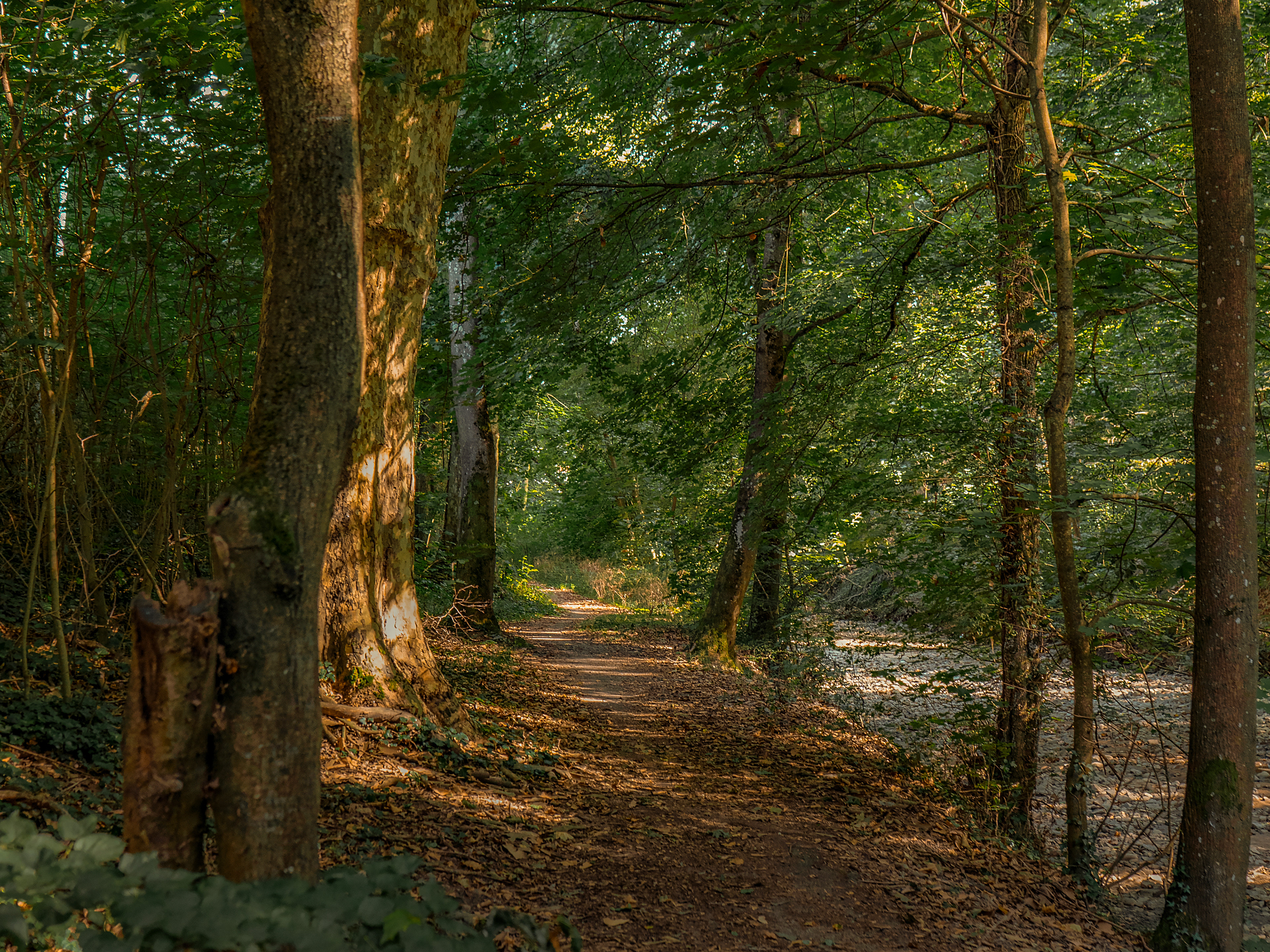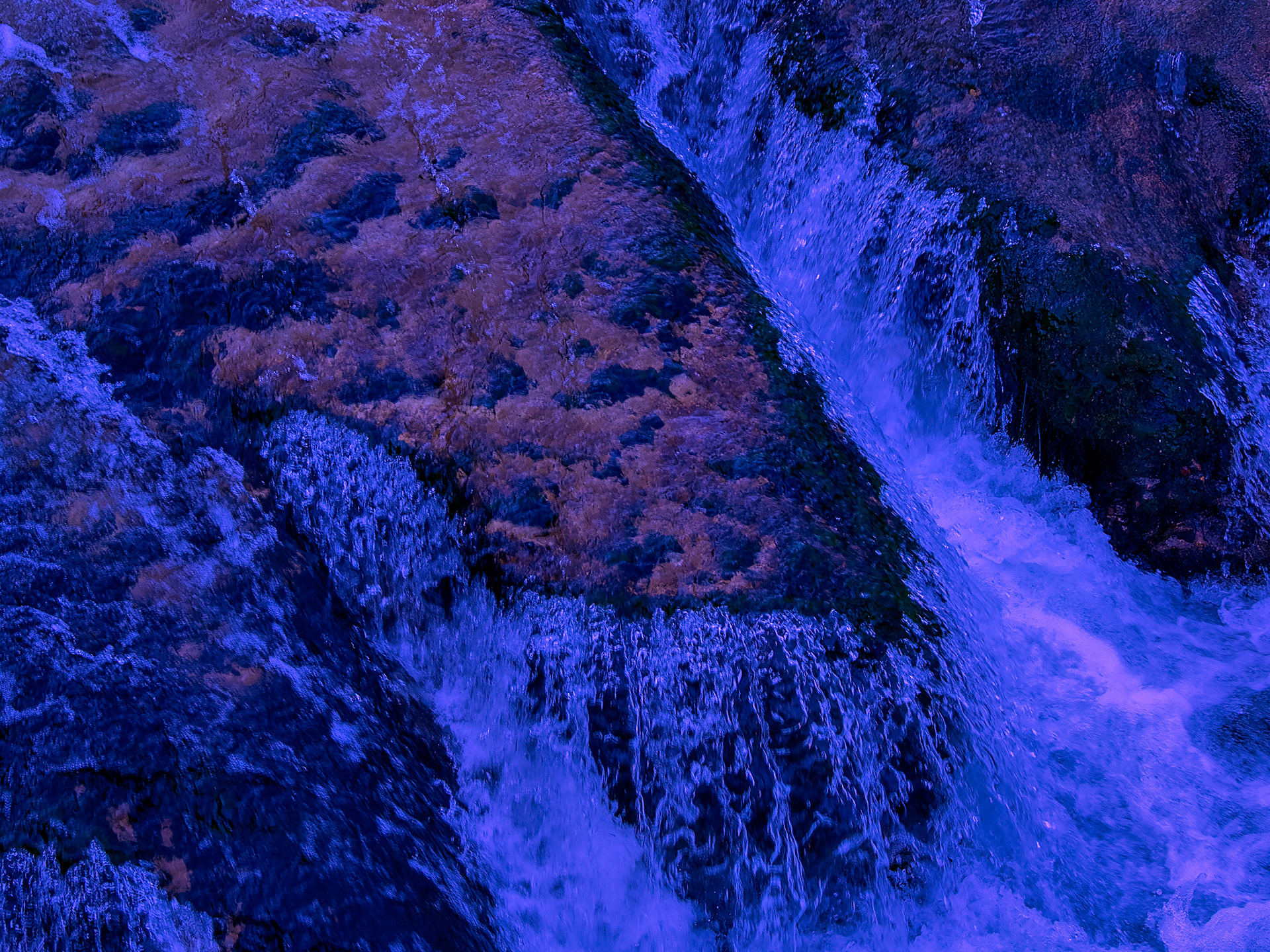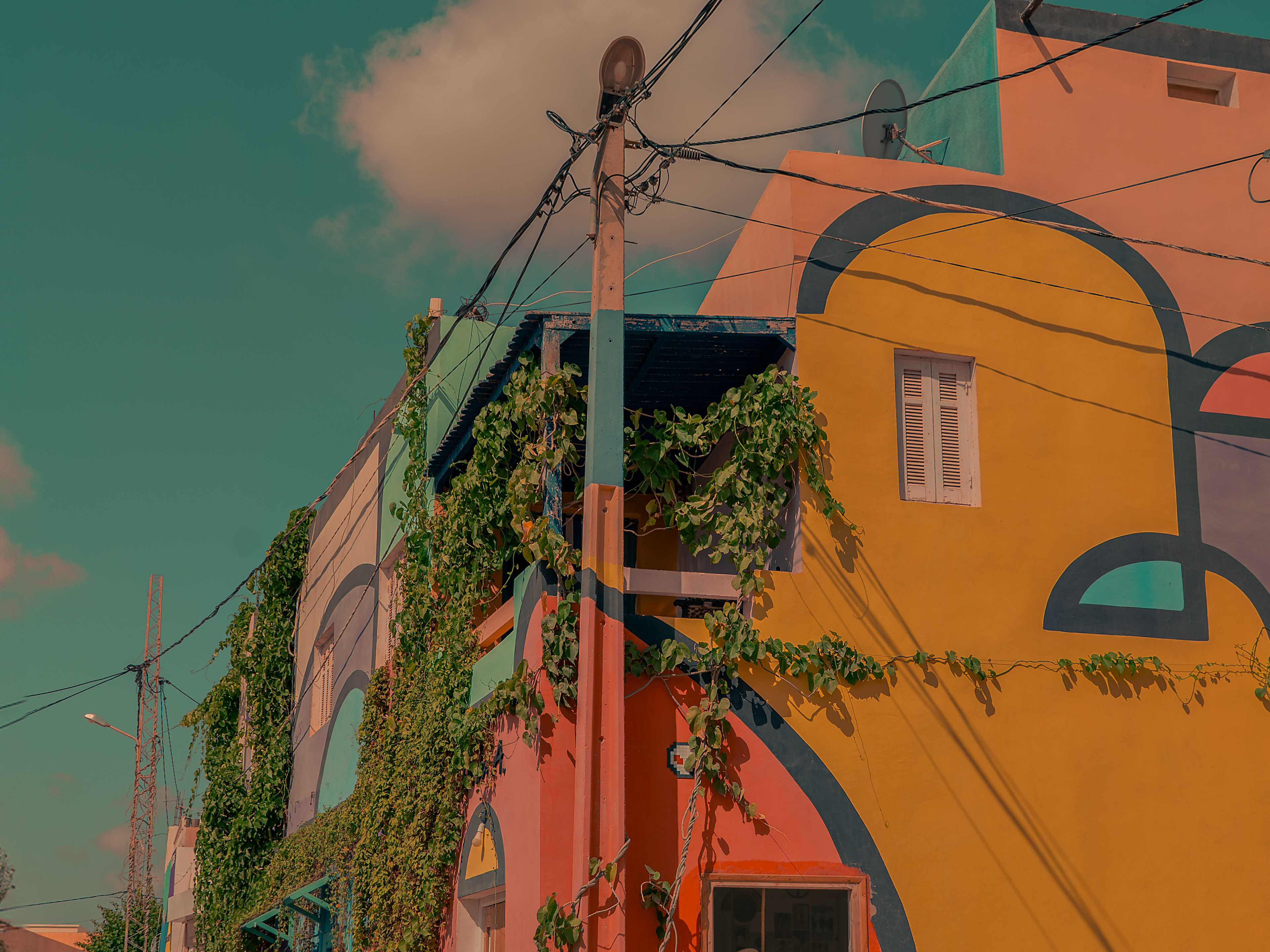"Long sung in many poems, Takaishi Beach in Osaka Bay used to be a seaside resort famous for its white sand and venerable pine trees. Among the trees, there is a shrine with a portico, which was a stopover for pilgrims on the way to Mount Koya. The white sails that punctuate the vast blue expanse, as well as the moored boats, suggest the intense maritime activity of this inland sea."
Takaishi Beach, Izumi province
"On the steep mountain that pierces the clouds, a stone staircase of one thousand and eighty-five steps is designed to seem vertical. Waterfalls gush out of the rocks, while below flows the river Ure between deep gorges. In the intense green of the foliage shines the vermilion of the buildings of the Buddhist monastery of Hôrai-ji: a famous sanctuary founded in 703, which benefited from the protection of the family of the Tokugawa shoguns until the 19th century."
The mountain of the Hôrai-ji temple, Mikawa province.
"The two sharp-topped rocks rising into the sea, one of which is twenty-seven meters high and the other twenty-two, are quite fascinating buildings. [...] Around Bo no ura, the "rock of the two swords", we can guess a steep coastline, and we can see the Akizuki cave in the distance."
Bo no ura, Satsuma province
"Mount Daisen, which can be seen through a curtain of rain, once personified the deity of the harvest; it was customary to dedicate rice fields to him to attract his blessings. We also see peasants busy transplanting rice, their feet in the water and their backs covered with a straw coat, alluding to these ancient practices."
Distant view of Mount Daisen, Hoki province
"The name of the shrine of Tsushima, west of Nagoya is linked to the festival of Tennô which was celebrated on the 14th and 15th day of the sixth month in the old calendar. The festivities began in the evening: five boats decorated with lanterns sailed on the river, each one consisting of two assembled boats on which were the chariots. The next day, the morning festival took place, the lanterns being replaced by brocade hangings to which all kinds of dolls were hung. This event is still very popular and takes place today in July."
The Tennô festival in Tsushima, Owari province
"In this print, a thirty-meter high waterfall appears, which falls on the sides of Mount Yoro. A legend telling the story of a model son who came to collect its waters to heal his old father founded the myth that it would be beneficial for the elderly. This waterfall has been sung in many poems and also appears in ancient paintings."
The Yoro Waterfall, Mino province
"This large stone portico of classical style which stands in the foreground, facing the sea, offers through its arch a singular view of Mount Yuga, at the foot of which the houses of Tanoguchi are aligned. The boats moored at the right remind us that the port owed its prosperity to the pilgrims who had made it their departure point for Konpira, a nearby and very popular sanctuary of Buddhist worship."
The Portico of Yuga Temple, Bizen province
"The river represented in this print is the Katsura River in the middle of which a stone lantern and a one-branched thunderbolt - an instrument used in Buddhist ceremonies - have been carved. According to the legend, the monk Kobo Daishi, in the 9th century, having struck the rock with his thunderbolt, hot springs would have sprung up. From this time, the thermal establishments of Shuzen-ji would date, transformed but still frequented today."
The hot springs of Shuzen-ji, Izu province
"This bird's eye view shows, in the foreground, a canal spanned by a bridge, then the Sumida River, and on the other side the Mukojima dam. The opposition of the white of the snow and the deep blue of the water gives the admirable impression of a snowy landscape all cold and pure in the rising sun."
Snowy morning on the Sumida river, Musachi province
credits
drawings and texts from Hiroshige: paysages célèbres des soixante provinces du Japon by Anne Sefroui









